
Logistics solutions provider Hub Group (NASDAQ:HUBG) missed Wall Street’s revenue expectations in Q1 CY2025, with sales falling 8.4% year on year to $915.2 million. The company’s full-year revenue guidance of $3.8 billion at the midpoint came in 5.6% below analysts’ estimates. Its GAAP profit of $0.44 per share was 3% above analysts’ consensus estimates.
Is now the time to buy Hub Group? Find out by accessing our full research report, it’s free.
Hub Group (HUBG) Q1 CY2025 Highlights:
- Revenue: $915.2 million vs analyst estimates of $970.2 million (8.4% year-on-year decline, 5.7% miss)
- EPS (GAAP): $0.44 vs analyst estimates of $0.43 (3% beat)
- Adjusted EBITDA: $88.96 million vs analyst estimates of $81.17 million (9.7% margin, 9.6% beat)
- The company dropped its revenue guidance for the full year to $3.8 billion at the midpoint from $4.15 billion, a 8.4% decrease
- EPS (GAAP) guidance for the full year is $2 at the midpoint, missing analyst estimates by 5.2%
- Operating Margin: 4.1%, in line with the same quarter last year
- Free Cash Flow Margin: 7.7%, up from 6.6% in the same quarter last year
- Market Capitalization: $1.94 billion
“I am proud of the team’s performance in the first quarter as we remained focused on yield management, cost containment and operating efficiency initiatives, resulting in an operating income margin of 4.1%, a 40-basis point improvement over last year and a 20-basis point improvement over the fourth quarter. This included a 70-basis point improvement in our Logistics segment operating margins versus last year. Looking ahead we are focused on providing exceptional service and value to our customers while effectively managing our costs and investing in our business to deliver long term growth,” said Phil Yeager, Hub Group’s President, Chief Executive Officer, and Vice Chairman.
Company Overview
Started with $10,000, Hub Group (NASDAQ:HUBG) is a provider of intermodal, truck brokerage, and logistics services, facilitating transportation solutions for businesses worldwide.
Sales Growth
A company’s long-term sales performance is one signal of its overall quality. Any business can experience short-term success, but top-performing ones enjoy sustained growth for years. Regrettably, Hub Group’s sales grew at a sluggish 1.6% compounded annual growth rate over the last five years. This fell short of our benchmarks and is a tough starting point for our analysis.
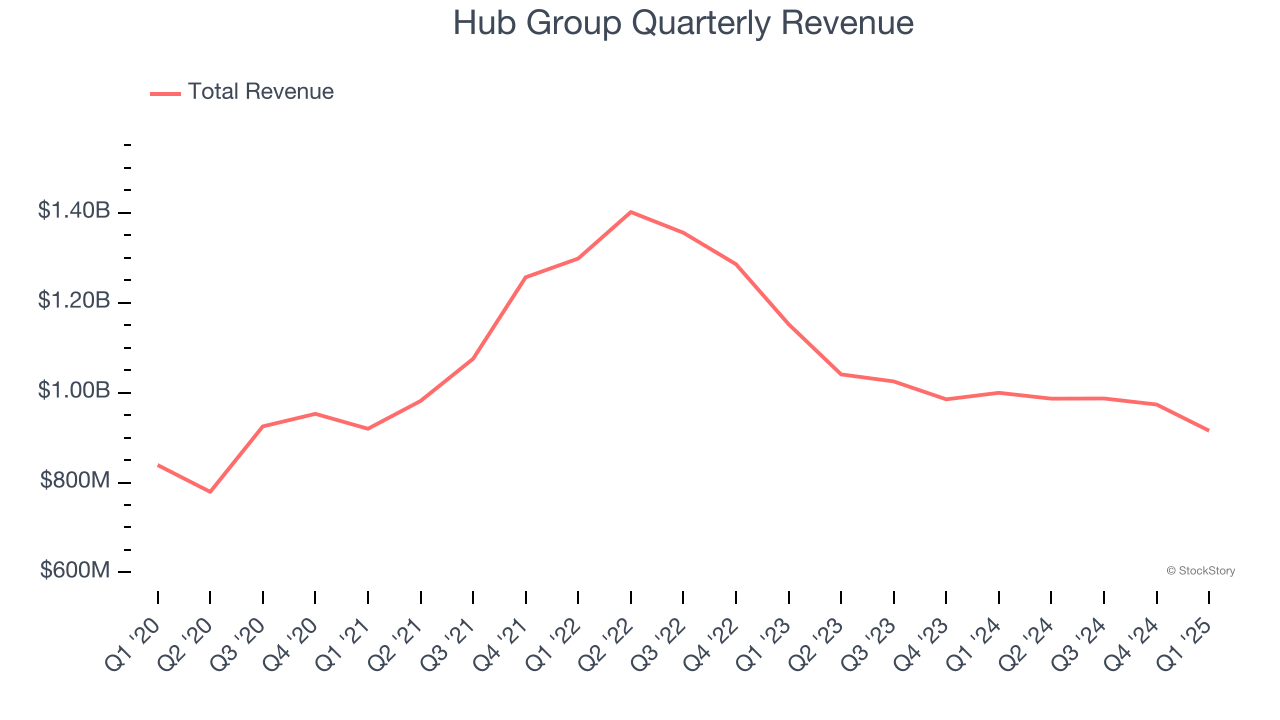
Long-term growth is the most important, but within industrials, a half-decade historical view may miss new industry trends or demand cycles. Hub Group’s performance shows it grew in the past but relinquished its gains over the last two years, as its revenue fell by 13.8% annually. Hub Group isn’t alone in its struggles as the Air Freight and Logistics industry experienced a cyclical downturn, with many similar businesses observing lower sales at this time. 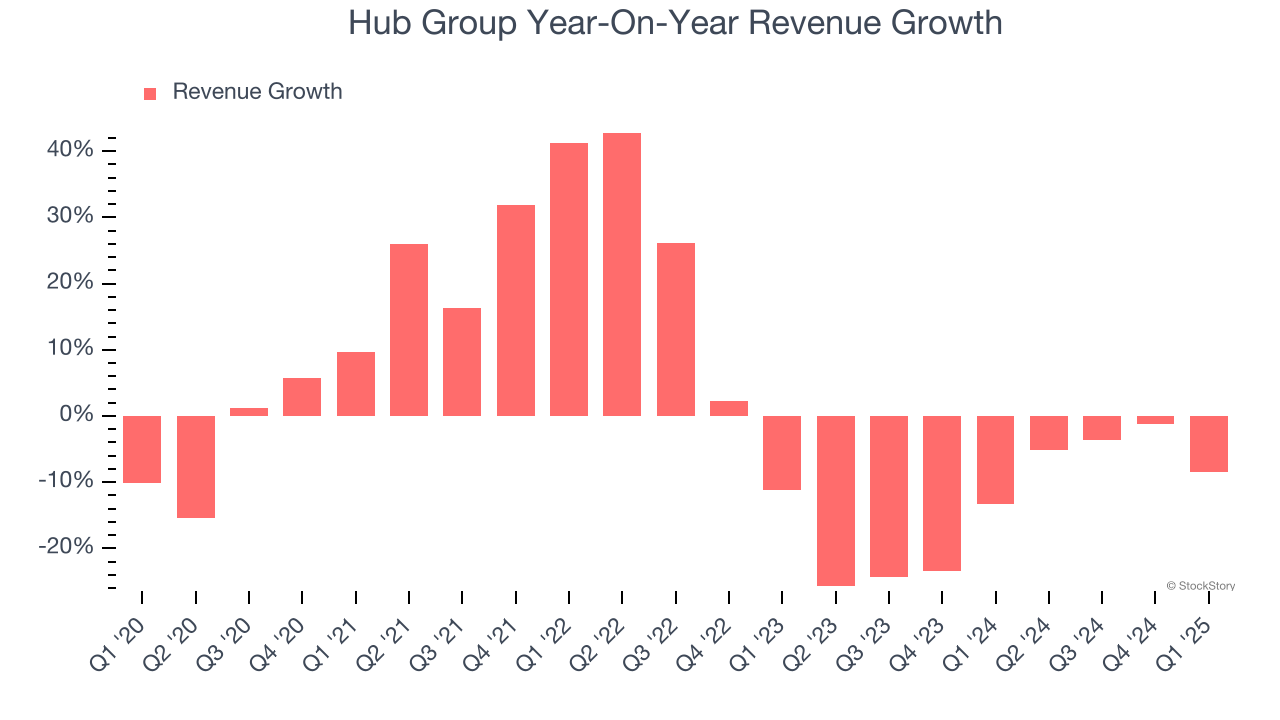
This quarter, Hub Group missed Wall Street’s estimates and reported a rather uninspiring 8.4% year-on-year revenue decline, generating $915.2 million of revenue.
Looking ahead, sell-side analysts expect revenue to grow 6.9% over the next 12 months. While this projection implies its newer products and services will catalyze better top-line performance, it is still below average for the sector.
Today’s young investors won’t have read the timeless lessons in Gorilla Game: Picking Winners In High Technology because it was written more than 20 years ago when Microsoft and Apple were first establishing their supremacy. But if we apply the same principles, then enterprise software stocks leveraging their own generative AI capabilities may well be the Gorillas of the future. So, in that spirit, we are excited to present our Special Free Report on a profitable, fast-growing enterprise software stock that is already riding the automation wave and looking to catch the generative AI next.
Operating Margin
Hub Group was profitable over the last five years but held back by its large cost base. Its average operating margin of 5.6% was weak for an industrials business. This result isn’t too surprising given its low gross margin as a starting point.
Analyzing the trend in its profitability, Hub Group’s operating margin might fluctuated slightly but has generally stayed the same over the last five years. This raises questions about the company’s expense base because its revenue growth should have given it leverage on its fixed costs, resulting in better economies of scale and profitability.
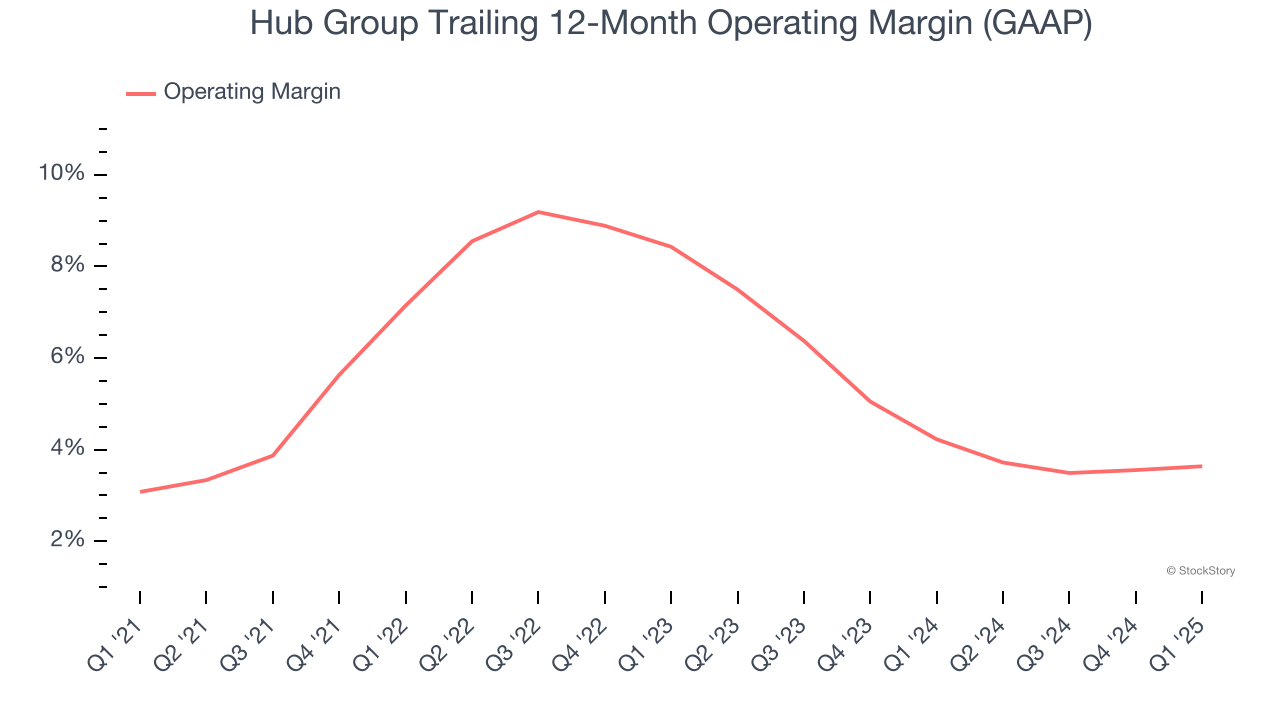
In Q1, Hub Group generated an operating profit margin of 4.1%, in line with the same quarter last year. This indicates the company’s cost structure has recently been stable.
Earnings Per Share
We track the long-term change in earnings per share (EPS) for the same reason as long-term revenue growth. Compared to revenue, however, EPS highlights whether a company’s growth is profitable.
Hub Group’s EPS grew at a weak 3.4% compounded annual growth rate over the last five years. This performance was better than its flat revenue but doesn’t tell us much about its business quality because its operating margin didn’t expand.
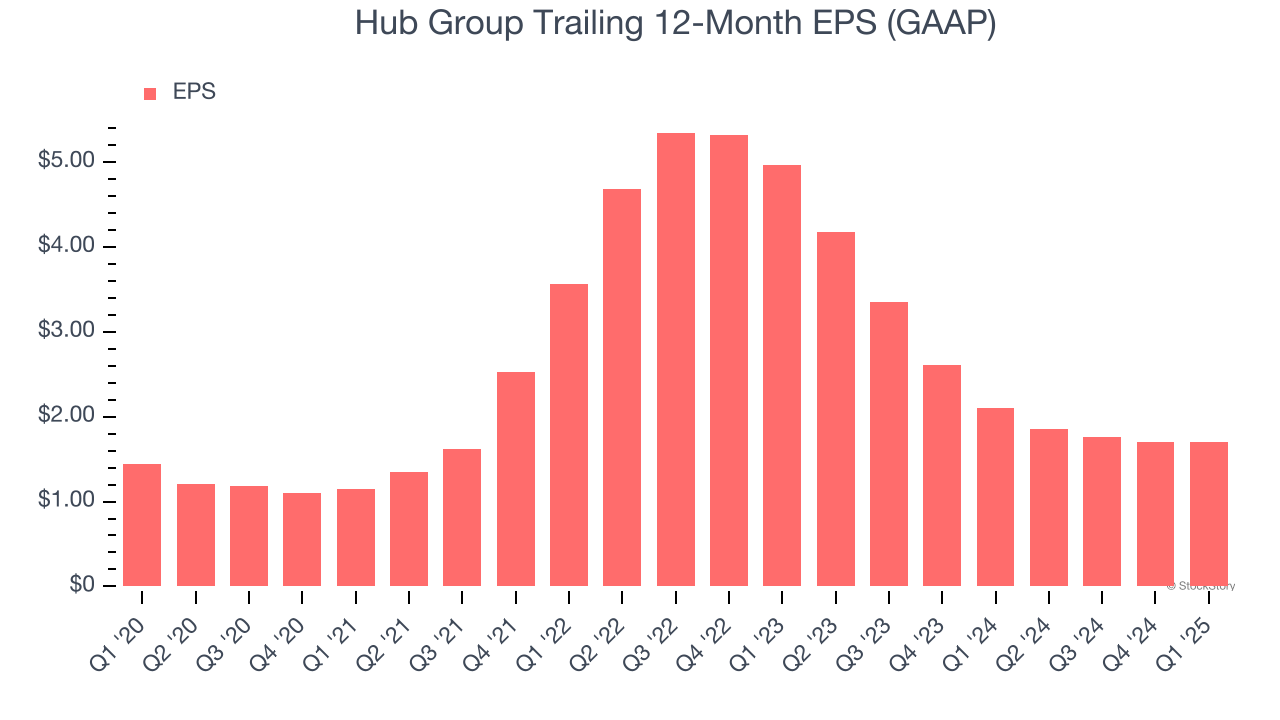
Diving into the nuances of Hub Group’s earnings can give us a better understanding of its performance. A five-year view shows that Hub Group has repurchased its stock, shrinking its share count by 9.8%. This tells us its EPS outperformed its revenue not because of increased operational efficiency but financial engineering, as buybacks boost per share earnings. 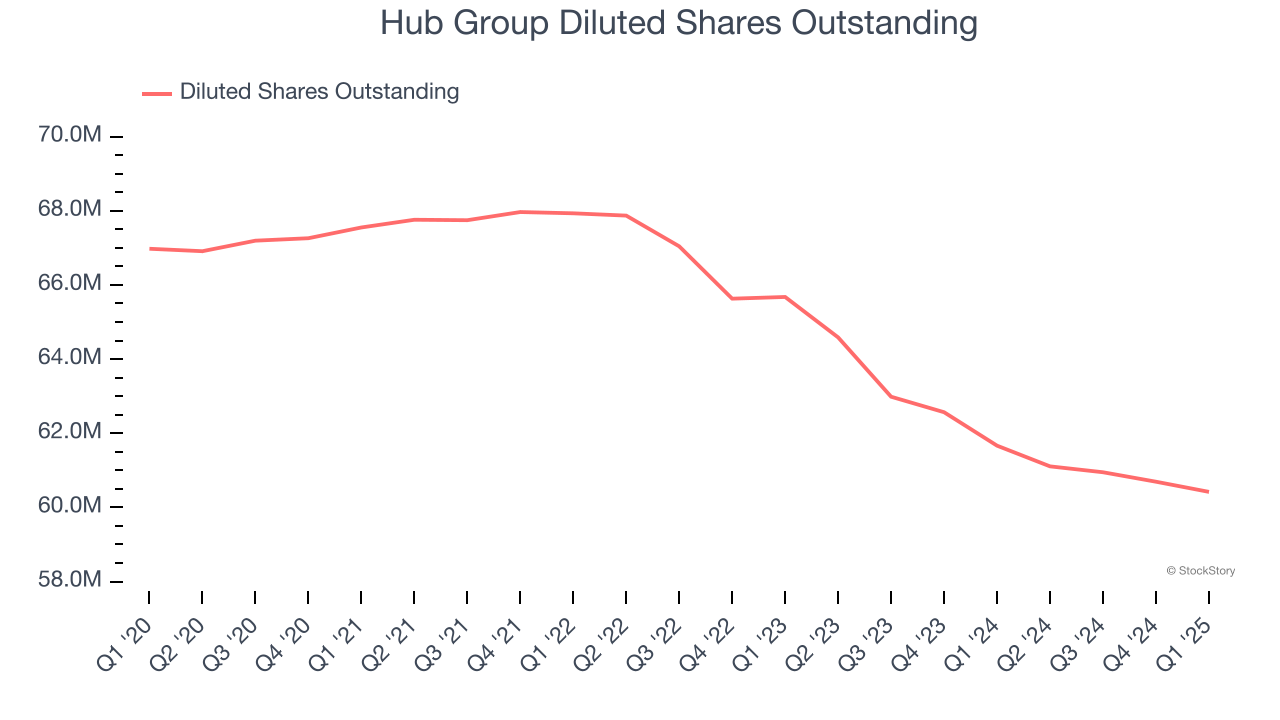
Like with revenue, we analyze EPS over a shorter period to see if we are missing a change in the business.
For Hub Group, its two-year annual EPS declines of 41.4% show it’s continued to underperform. These results were bad no matter how you slice the data.
In Q1, Hub Group reported EPS at $0.44, in line with the same quarter last year. This print beat analysts’ estimates by 3%. Over the next 12 months, Wall Street expects Hub Group’s full-year EPS of $1.70 to grow 29.7%.
Key Takeaways from Hub Group’s Q1 Results
We were impressed by how significantly Hub Group blew past analysts’ EBITDA expectations this quarter. We were also happy its EPS outperformed Wall Street’s estimates. On the other hand, its full-year revenue guidance missed significantly and its full-year EPS guidance fell short of Wall Street’s estimates. Overall, this was a mixed quarter. The stock traded up 1.1% to $33.50 immediately following the results.
Is Hub Group an attractive investment opportunity at the current price? The latest quarter does matter, but not nearly as much as longer-term fundamentals and valuation, when deciding if the stock is a buy. We cover that in our actionable full research report which you can read here, it’s free.
